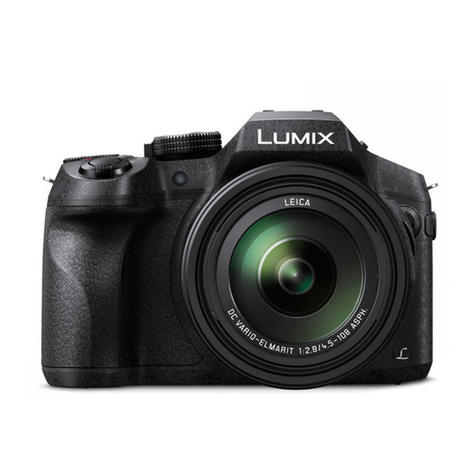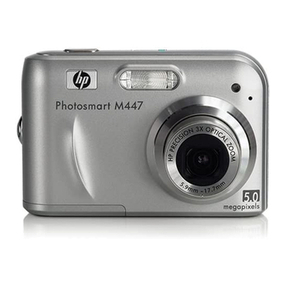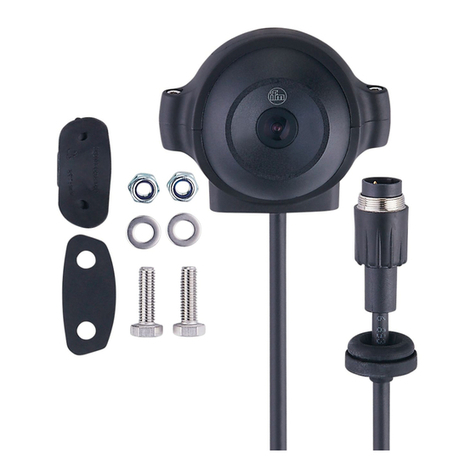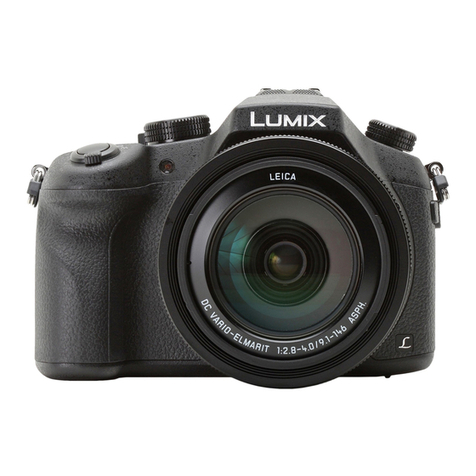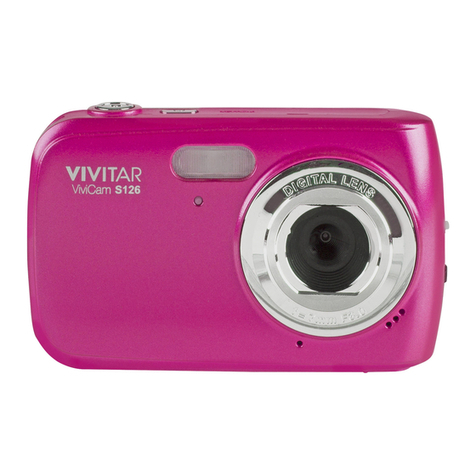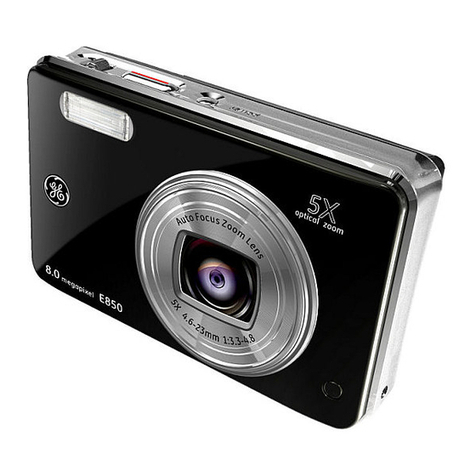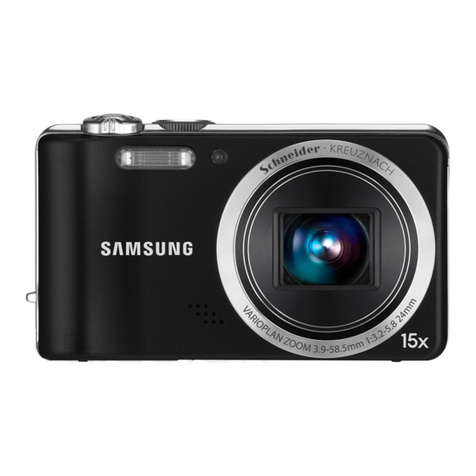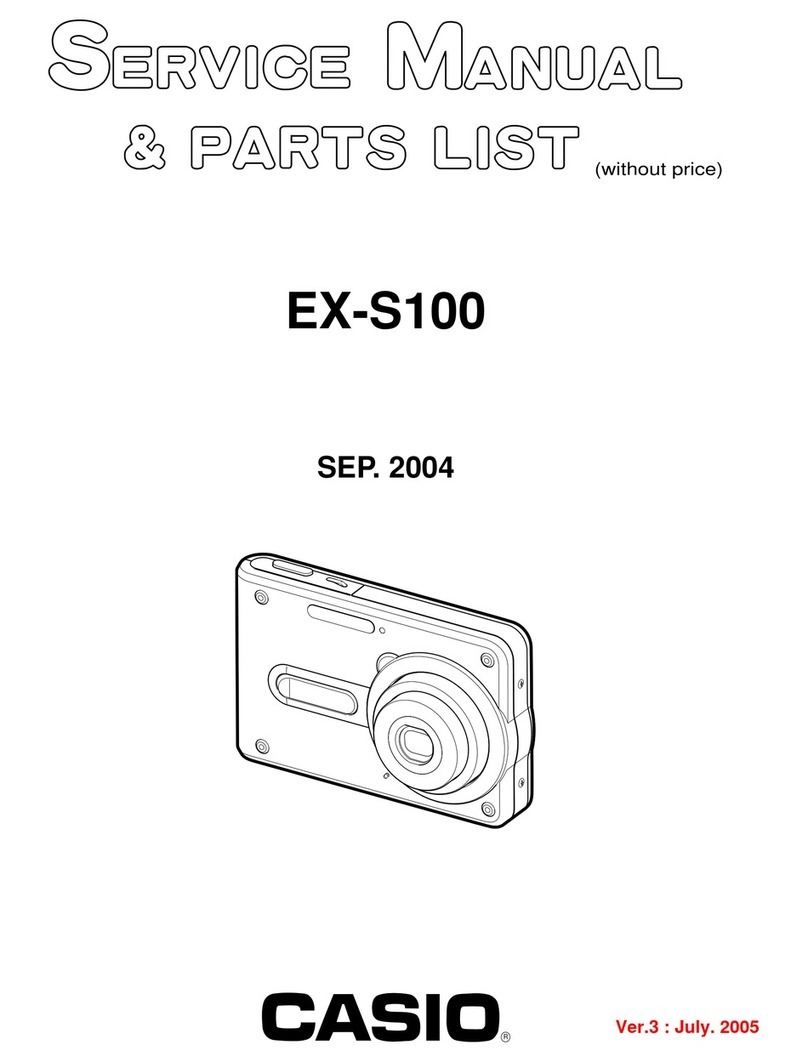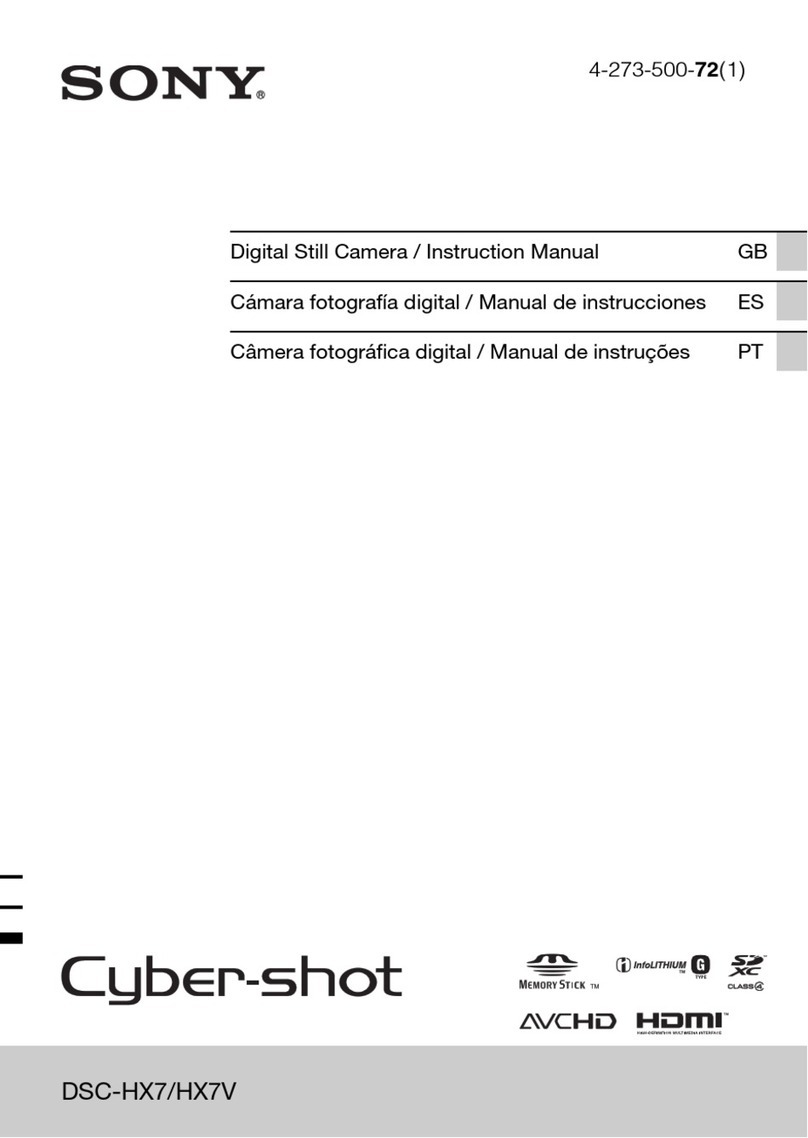Silicon Imaging SI-3300 MegaCamera User manual

Silicon Imaging , Inc. 2004 Page 1 of 39 Company Confidential
Silicon Imaging
SI-3300 MegaCamera
3.2 Million Pixel Progressive Scan Digital Camera
Revision 1.0
July 8, 2004
3.2 Million Pixels
2048 x 1536 Image Sensor
3.2 um Square Pixel
½Optical format
Rolling Shutter
Subsampling & Binning
20~80Mhz Clock rates (-H version)
10 Bit Digital Sampling
Auto Black Level Correction
62.9dB Dynamic Range
CL High-Speed Interface
**** Company Confidential ****

Silicon Imaging , Inc. 2004 Page 2 of 39 Company Confidential
&
!""#$%&
Silicon Imaging Inc.
INTRODUCTION
Silicon Imaging is proud to continue its innovation in high-resolution
color vision camera. Driven by the growing demand for consumer Digital
Still Cameras, CMOS sensors are continuing to break technical barriers
and surpass the performance characteristics of CCD’s in many photonic,
imaging and consumer applications. By utilizing a single highly integrated
CMOS device, which incorporates Megapixel sensing areas, timing
generation, Analog-to-digital Conversion and signal processing, Silicon
Imaging has developed a very compact, low-power, ultra high speed
Megapixel digital camera system.
2048 x 1536 Megapixel - Ultra Resolution
The SI-3300 is an all-digital ½” format CMOS camera that delivers 3.2
Million pixels of resolution and is capable of running at over 12
frames/second at its full 2048 x 1536 resolution. The entire package is
only 45 x 52 x 50mm (33 x 40mm x 22mm in PCB) and is small enough to
placed on a robot for semiconductor machine vision inspection or placed in
an outdoor housing for remote surveillance. It is ideal for live visualization
and handheld instrumentation.
10-Bits Sampling – Sub-Pixel Accuracy
The SI-3300 MegaCamerauses 10-Bit digitizers to sample the pixel
data. Converting the pixel data directly to digital at the sensor head
eliminates pixel-sampling jitter and enables accurate sub-pixel metrology,
image analysis and improved live video reconstruction. A programmable
clock which ranges from 20~40Mhz or up to 80MHz with -H version, allows
for trade-offs in speed versus exposure time and lower noise.
Subsampling with Binning – Video Preview
Ideal for high speed preview and focusing, the SI-3300 is capable of
generating imagery at over 30 frames per second by reducing the size of
the readout image in color subsampling mode, This entire imager is
readout by binning 4x4 groups of pixels into 2x2 bayer super pixels with
increased sensitivity, less aliasing and faster readout rates. The camera
also supports up to 3x binning and 8x subsampling.
1000FPS Windowing and 720/1080P HD Modes
A small region of the imager can be readout at frame rates in excess of
1000fps, with speed increasing with reduced vertical and horizontal
settings. At 1920 x 1080 and a 75MHz clock the output rate would be
30fps or 1280x720 at 73MHz will be 60fps. The window size and position
can be adaptively changed on frame-by-frame basis.
Automatic Black Level Correction
The SI-3300 has automatic black level calibration, which measures the
average value pixels from two dark rows of the imager for each of the four
colors. The pixels are averaged as if they were light sensitive and passed
through the appropriate color gain. This average is then digitally filtered
over many frames and compared to minimum and maximum acceptable
thresholds for automatic correction.
CameraLinkDigital Interfaces (12-Bit 1-Tap)
An industry standard forum has adopted Camera Link, for low cost
connectivity and cabling of cameras and frame grabbers at very high
speeds. The SI-3300-CL utilizes the high speed CameraLink interface to
output data continuously to a frame grabber and directly into PC memory
for further processing. The single cable includes image data, synch,
Triggering and 9600 baud Serial communication. As this camera complies
with the standard, it is compatible with many popular frame grabber and
image processing hardware devices and GigaBit Ethernet or fiber-optic
repeaters for extended distance transmission.
FEATURES
· 2048 x 1536 Resolution (3.2 Million Pixels)
· 1/2” Imaging Format , 5.2um Square Pixel
· Rolling Shutter, Progressive scan
· 640 x 480 VGA Windowing at 120fps
· 10 Bits per Pixel, 48MHz Sampling (Nominal)
· 20 ~ 80MHz Programmable Clock (– H Version)
· Programmable Gain, Exposure & Clocks
· Auto Black Level Calibration
· Monochrome & Color Bayer RGB Model
· Custom PCB Version
· Cameralink Interface
· C-Mount Precision Machined Housing

Silicon Imaging , Inc. 2004 Page 3 of 39 Company Confidential
SI-3300 MegaCamera CameraLink Specifications
Sensor:
Optical Imaging Format 1/2” (6.55mm x 4.91mm, 8.19mm diagonal)
Active Pixels 2,048H x 1,536V
Pixel Size (pitch) 3.2 µm x 3.2 µm
Pixel Type CMOS
Aspect Ratio 1 : 1
Spectral Response 350 ~ 1000 nm (Bayer Color Filtered)
Responsivity > 1.0 V/lux-sec (550nm)
Temporal Noise TBD
Saturation Charge TBD
Dynamic range 61dB
SNR max 43dB
Windowing (ROI) Horizontal & Vertical speed increase
Sub-sampling Full, 1/2, 1/3, 1/4, 1/8
Binning 2x (4x4 to 2x2 / 4:1) & 3x (6x6 to 2x2 / 9:1)
Gain MAX 8x Analog, 18x with Digital
Readout Method Progressive Scan
Black Level Auto Black Level Calibration
Shutter Rolling Shutter with Global Reset option
Shutter Speed / Integration Variable, approx. 50usec ~ 50sec
Horizontal Blanking 390 Clocks/line
Minimum Row Time 647 clocks (257 + 390 blanking)
Vertical Blanking 4 Rows
Row/Frame Time (default) 2438 clocks/row x 1540/rows @ 40MHz
A/D Conversion & Sampling Clock Synthesizer
A/D Conversion Nominal 40Mhz (12fps @ 3.2MP)
Readout Rate 20 ~ 80Mhz x 12bit format
A/D Resolution 10 Bit (CL Format = 12bit Single-Tap)
Pixel Clock Frequency 20 ~ 40 Mhz Programmable
20 ~ 80Mhz (-H option)
Digital Video Output
Interface Cameralink Base, Single-tap, 12bit
Readout Format CL - 12 Bit Base
Duplicated data on Ports A, B
Effective Data Rate 20~ 80MB/sec (8-bit, using MSB)
40~160MB/sec (12-bit Unpacked)
Frame Rate 2048 x 1536
1600 x 1200
1920 x 1080
1280 x 720
640 x 480
320 x 240
128 x 128
40MHz
11
17
16
33
80
243
296
75MHz
20
31
30
62
150
456
555
Row/Frame Time (default) 1524 clocks/row x 1050/rows = 30fps
CameraLink Frame Grabber Control:
Serial Communication RS-232 Protocol 9600bps (57.6k)
Serial Signaling TX & RX (LVDS)
Triggers LVDS – CC1 (-CL)
TTL Trigger-In / Strobe-Out (option)
Region-of–Interest Programmable Horiz & Vertical
Programmable Modes Exposure, Gain, Windowing, Clock
Rates, Auto black, trigger.
Gains (R,G,B,G & Global) Individual RGBG Gains
Range: 18X, Min step size 0.125
Setting Timing Next top of Frame
Ext Clock Sync Clock in or Clock Out (-X Option)
Power
Input Voltage +5 VDC +/- 10%
Power 2.5 Watts
Power/Trigger Connection Tajimi RO3-PB3M 3Pin (-CL)
Tajimi RO3-PB5M 5Pin (-X)
Mechanical
Lens Mount C-Mount, 7mm Back focus Adj.
Enclosure Size 45mm W x 52mm H x 50mm L
Weight 12 oz.
Camera Mount ¼” x 20 standard tripod mount
Cable Connector Cameralink MDR-26
Mechanical Dimensions
ORDERING INFORMATION
SI-3300-[RGB or M]-S 3.2 MP Digital Camera, 2M Cable, PCI Frame Grabber & Win NT/2K/XP Imaging Software System
SI-3300-[RGB or M]-CL 3.2 MP Digital Camera (RGB for Color, M for Monochrome) Cameralink (-CL)
-X - H High-Speed CL 80MHz (–H), Add external clock sync (-X)
FG-1300-xx Frame Grabber PCI (32 = 32Bit PCI -64 = 64bit PCI)
CL-2M, 3M, 5M, 10M 2 / 3 / 5 / 10 Meter Digital Cameralink Cable
PC-3 Power Cable (3M)
PCT-3 Power supply & External TTL trigger (3M
PS-5 5VDC Power supply

Silicon Imaging , Inc. 2004 Page 4 of 39 Company Confidential
SI-3300 Camera Architecture Overview
The MegaCameraSI-3300 consists of 6 major component sections, which are built on two circuit boards.
Camera Block Diagram
MDR-26
5VDC
Power
Supply
CLOCK
DATA (10)
LVAL
FVAL
PLL & Timing
Generator
Camaerlink
2048 x 1536
CMOS Sensor
&
A/D
Converter
Register
Programming uP
Control
Digital
Logic
Trigger
Controller
Trigger In
Strobe Out
1.) 3.2 Megapixel Sensor
2.) Digital Clock Synthesizer
3.) Digital Control Logic
4.) Microprocessor
5.) CL Interface
6.) Power Regulation
7.) Trigger & Strobe Controls
1.) 3.2 Megapixel CMOS Image Sensor (2048 x 1536)
The MegaCameraSI-3300 utilizes a proprietary 3.2 Million pixel high-speed CMOS image sensor. Each pixel is
5.2um Square, ideal for image processing, and the entire array fits the 1/2” format for flexible optic choices. This
reduction in process geometry allows for both an increase in transistors and fill factor without compromising
performance, plus offers more advanced readout controls, greater speeds and lower power dissipation.
This new sensor technology offers a more responsive pixel design with added circuitry for increased dynamic range,
greater sensitivity, decreased fixed pattern noise and low dark current for long exposure applications. Unlike CCD,
which leak charge to adjacent pixels when the registers overflows (blooms), the SI-3300 provides inherent anti-
blooming protection in each pixel, so that there is no blooming.

Silicon Imaging , Inc. 2004 Page 5 of 39 Company Confidential
The array has 2048 pixels on a line and 1536 rows, which result in a 4:3 aspect ratio.
The sensor array design is based
on a field integration read-out system with line-by-line transfer and an electronic shutter with a synchronous pixel read-out scheme
(aka. Rolling Shutter Method)
Analog Gain Amplifier & Offset
The imager signal path consists of two stages, a programmable gain stage and a programmable analog offset stage.
The gain settings can be independently adjusted for the colors Green1, Blue, Red, and Green2 and are programmed
through registers. A total programmable gain of 18x is available. The programmable analog offset stage corrects for
analog offset that might be present in the analog signal. The analog offset settings can be independently adjusted for
each color (R/G1/G2/B).
Automatic Black Level Compensation
The automatic black level calibration measures the average value of 256 pixels from two dark rows of the imager for
each of the four colors. The pixels are averaged as if they were light-sensitive and passed through the appropriate
color gain. This average is then digitally filtered over many frames. For each color, the new filtered average is
compared to minimum and a maximum acceptable level. If the average is lower than the minimum acceptable level,
the offset correction voltage for that color is increased. If it is above the maximum level, the level is decreased. The
upper threshold is automatically adjusted upwards whenever an upward shift in the black level from below the
minimum results in a new black level above the maximum. This prevents black level oscillation from below the
minimum to above the maximum. The lower threshold is increased with the maximum gain setting (out of all four
colors), according to Register settings. This prevents clipping of the black level. After changes to the sensor
configuration, large shifts in the black level calibration can result. To quickly adapt to this shift, a rapid sweep of the
black level during the dark-row readout is performed on the first frame after certain changes to the sensor registers.
2.) 10-Bit Digital Sampling System
A 10-Bit Analog-to-digital (A/D) converter samples each pixel value and quantizes it into 1024 levels inside the
sensor. Pixel clock sampling ensures precise measurement of the photonic charge without the jitter and sampling
uncertainty associated with traditional analog video systems, such as RS-170 and CCIR. This produces images
which can deliver improved photometry accuracy and sub-pixel metrology. The use of 10-bit converters versus
traditional 8-bit systems further enhances the image dynamic range. The combination of 10-bit vertical resolution
and pixel clock sampling provide precise sub-pixel measurement accuracy (ex. 1/10 pixel).

Silicon Imaging , Inc. 2004 Page 6 of 39 Company Confidential
3.) Digital Clock Synthesizer
A wide range a master clock frequencies (eg. 20 to 80MHz) can by precisely generated using the Digital Clock
Synthesizer. The Frame Grabber, which is used with the camera, must be capable of receiving 12bit at 40Mhz for
standard cameras or up to 80Mhz for the High-Speed (-H) model to achieve the highest data rates. Without any byte
packing of the 12-bit word the data rate would be 160MHz (2pixel x 2bytes/pixel x 80MHz). In standard 32Bit/33MHz
PCI computers the maximum data rate directly to host memory is usually below 120Mbytes/sec (from 132MB/sec
bus) without system interrupts. However, 100MB/sec is more reasonable rate to achieve with other system devices
operating (eg. display, clock, mouse etc.). Under these condition the 12-bit data can be mapped to 8-bits/pixel to
reduce the bus traffic or the clock rate can be reduced to and still maintain 12bits/pixel. The frequency of the clock
synthesizer can be set by serial command. A table with associated clock frequency is found in the serial
programming section of the manual. Due to minimum frequency restriction on the digital transmission link, the pixel
clock frequency cannot be lower than 20Mhz.
4.) Embedded Microprocessor
A microprocessor in the camera provides the control interface between the PC and the functional block in the camera
(Sensor, Clock Synthesizer, Register Memory, Channel Link Interface & Serial port (CameraLink). The
Microprocessor receives commands thru the LVDS level serial port and issues commands to the other devices. It
also can store preset values for camera setting, which can be recalled with single ASCII character commands.
Several digital I/O or analog sampling signals are available on the processor from PCB header points for custom
OEM applications.
5.) 12-Bit CameraLink Interface (Base Configuration)
Camera Link is a new digital transmission method designed by imaging component manufacturers as an easy and
standard way to connect digital cameras to frame grabbers. The Camera Link specification includes greater than
1.2Gb/sec data transmission as well as camera control and asynchronous serial communications all on a single
cable with high-density 26pin connector. Only two connections are required to quickly interface your digital camera
to a multitude of frame grabbers. This standardization will ultimately reduce cost of high performance digital cameras
through open market competition and a simple migration path to faster and higher resolution systems.
As a standard that has been defined by industry members, Camera Link provides the following benefits:
•Standard Interface: Every Camera Link product will use the same cable and signaling. Cameras and frame
grabbers can easily be interchanged using the same cable.
•Simple Connection: Only two connections will be required to interface a camera and frame grabber: Power
and Camera Link.
•Lower Cost: Because Camera Link is an industry-wide standard, consumers will be able to take advantage
of lower cable prices.
•Smaller connectors & cables: The technology used in Camera Link reduces the number of wires required
to transmit data over traditional LVDS or RS-422 parallel interfaces, allowing for smaller cables. Smaller
cables are more robust and less prone to breakage.
•Higher data rates: The technology used in Camera Link has a maximum data rate of 2.3GB/s, for use in the
most demanding high definition, high frame rate and line scan.

Silicon Imaging , Inc. 2004 Page 7 of 39 Company Confidential
CameraLink Camera Signal
This section provides definitions for the signals used in the Camera Link interface. The standard Camera Link cable
uses a MDR 26-pin connector (3M Part# 10226-6212VC)provides the following signaling:
•Video Data (4 Pairs using 28:4 Mux, 24 Video, 4 Control)
•Camera control signals (1 Pair)
•Serial communication (2 Pairs)
Video Data
The 24 bit image data (2 words x 12 bit) and 4 control bits are transmitted over only 4 differential pairs using a 28:4
multiplexer (National Semiconductor DS90CR285 Channel Link device). The Four enable signals are defined as:
• FVAL—Frame Valid (FVAL) is defined HIGH for valid lines.
• LVAL—Line Valid (LVAL) is defined HIGH for valid pixels.
• DVAL—Data Valid (DVAL) is defined HIGH when data is valid.
• Spare— A spare has been defined for future use.
All four enables are provided on the camera, via the Channel Link chip. The unused data bits are tied to a known
value by the camera. For more information on image data bit allocations, see page 11, CameraLink Base
Configuration Bit Assignment Configuration.
Communication
Two LVDS pairs have been allocated for asynchronous serial communication to and from the camera and frame
grabber. Cameras and frame grabbers should support at least 9600 baud. These signals are
• SerTFG—Differential pair with serial communications to the frame grabber.
• SerTC—Differential pair with serial communications to the camera.
The serial interface operates at 9600 baud, one start bit, one stop bit, no parity, and no handshaking. For
applications requiring high serial throughput, such as real time windowing update at over 200FPS, the camera can
support a serial link mode at 57kbs (not specified in CameraLink spec). The frame grabber serial communication
must be set to match this speed.

Silicon Imaging , Inc. 2004 Page 8 of 39 Company Confidential
Camera Control Signals & Power
Four LVDS pairs are reserved for general-purpose camera control. They are defined as camera inputs and frame
grabber outputs. Camera manufacturers can define these signals to meet their needs for a particular product. The
signals are:
• Camera Control 1 (CC1) - Used to do triggered image capture
• Camera Control 2 (CC2) for external master clock (optional)
Tajimi RO3-PB3M – POWER CABLE
5VDC Power Supplies

Silicon Imaging , Inc. 2004 Page 9 of 39 Company Confidential
3-PIN POWER & TRIGGER INPUT WIRING
PhotoEye Trigger and Power Connection

Silicon Imaging , Inc. 2004 Page 10 of 39 Company Confidential
Power-On Communication & Presets
Initial State
When the power is first applied to the camera the camera will load its default (Preset #0) settings and will be
generating live video and a serial status message. Preset #1 can be overwritten thru programming commands. Once
Preset#1 is overwritten it will be the new power-on default setting.
If the Frame Grabber supports a serial terminal mode the following menu will appear:
100: Booted
108: CameraLink SI3300 3.12.08
120:C2010610 Sensor tag
190:66633035 Configuration code
's' - status
Returns the firmware version, clock configuration word, Sensor Tag, and FPGA Configuration code. Camera output
example:
108: CameraLink SI3300 3.06.08
110:306882 Clock
120:C2010610 Sensor tag
190:66633035 Configuration code
Default Settings
When first turned on, the SI-3300 will be in the default mode, which will be 10 fps Full Frame Readout at 40MHz
master clock. See serial programming section for details on changing formats.
Full Resolution, Rolling Shutter, Single-slope, 40MHz
Resolution = 2048 x 1536
Clock = 40MHz
Integration = 1561 Rows
Global Gain = 2.0
Frame Rate = 11 FPS

Silicon Imaging , Inc. 2004 Page 11 of 39 Company Confidential
Serial Communication & Protocol
The SI-3300 is capable of mode programming through its serial interface. Commands are sent from the CameraLink
frame grabber to the camera. The commands are processed by the micro controller and communicated to various
devices in the camera including the sensor, digital clock synthesizer and the Flash memory inside the
microprocessor itself.
The communication uses an asynchronous serial format, similar to RS232, but is transferred to the camera using
LVDS as part of the CameraLink interface specification.
Format: Asynchronous, ASCII
Rate: 9600
Data Bits: 8 + 2 Stop bits
Parity: No Parity
Interface: Serial LVDS (thru CameraLink)
The baud rate is set to 9600 and 8 data bits with no parity. This is the format set by the CameraLink standard.
However, faster rates can be set by the factory and coordination with the Frame Grabber supplier.
Serial Commands
There are two types of commands Single character and Register String (multiple characters followed by Carriage
Return). Once the camera receives the string ending with a <CR> it will respond. For each command, there is a
corresponding action and response from the camera.
Single Character commands
“s” Camera status including firmware version, clock configuration word, sensor tag and
CPLD configuration codes.
“f” Arm single frame capture. Trigger frame capture & readout if already armed.
“c” Continuous Live Rolling Shutter Operation. Return tpo ERS after arming with an ‘f’
“g” Enter Genlock Mode. Use “c” to return to continuous (supported by -H model)
“h” Change to high-speed serial mode for operation at 57.6kbaud
*** Note: All commands must terminate with a <cr> (carriage return).
Register String commands
Each command may be entered through the Terminal communication mode from the frame grabber software. All
ASCII characters sent should be lower case and no spaces between characters. The string is terminated with a
carriage return <cr>. Hex numbers are sent as ASCII characters: 0Fh is sent as “0F” character. There are no spaces
between characters being sent in strings. These are multiple character string commands with a common format.

Silicon Imaging , Inc. 2004 Page 12 of 39 Company Confidential
Register String Commands
Command Description Parameters Response
lc xxxxxx <cr> Load Clock Register
(See clock table)
xxxxxx = 6 hex values from table 114: Clock updated
ly rr xxx <cr> Load Sensor Registers
Loads registers 00 to ff with 16bit
values, which are sent as 4 ascii
characters representing hex.
rr = register number 00~ff
xxx = x0000~xFFFF
104: Sensor updated
le x <cr> Load EEPROM preset value
***overwrites factory values x = 1
le1 = stores preset #1 106: Preset updated
ld x <cr> Load Bootup Default
x = 0 or 1
ld1 = boots camera with preset #1
'luAA[YYXXx16]'
Load upper/user memory
7k-Bytes. Configured in 256
slots. Each slot has 16 memory
locations of14bits for
AA = slot (00 ~FF
YY = Memory (00-10)
XX = 14 bit value (00~ F
The first two bits (MSBs) of the first
byte and of every odd byte are not
stored.
lr xxxx Read back user/upper memory
ln xxxx Load new firmware xxxx = password to enable
firmware upgrade (contact factory)
*** Note: All commands must terminate with a <cr> (carriage return). Hex characters are lower case, no spaces.
Load Sensor Command Format
The following registers for SI-3300 control the sensor readout, timing and signal output levels. These are
programmed thorough ‘ly’ register commands. The register number is represented by 2 characters. All sensor
registers are 16 bits in length and are represented by 4 characters. The ASCII command format is:
ly rr xxxx <cr> rr = register number xxxx = values 0000 to ffff
The ly stands for load sensor array and must be sent as lower case. The “rr” is the register to be changed. The
“xxxx”, “represents four HEX values that are to be loaded into each register. The sequence must end with a carriage
return <cr>.
The following is an example of a 10-character command string
l y 0 1 0 0 6 4 <cr>
This command will load the WIDTH register “01” with hex “0064”. The resulting value loaded into the Width register is
“0064” or 101 in decimal. The actual resulting width in the image is width-, which equals 100.

Silicon Imaging , Inc. 2004 Page 13 of 39 Company Confidential
SI-3300 Sensor Register Programming
Register Name Default Description
0x00 Chip Version 0x1601 or 11 Chip ID Response
0x01 Row Start 0x0014
(20)
First row to be read out + 20. (Bits 10~0)
Note: Register value must be an even number.
0x02 Column Start 0x0020
(32)
First column to be read out + 32. (Bits 11~0)
Note: Register value must be an even number. If column bin is enabled,
the value must be a multiple of Reg0x23 [5-4] + 1.
0x03 Height 0x05FF
(1535)
Number of rows – 1. Min = 0x0001. (Bits 10~0)
Note: Register value must be an odd number.
0x04 Width 0x07FF
(2047)
Number of columns – 1. Min = 0x0001. (Bits 10~0)
Note: Register value must be an odd number.
0x05 Horizontal Blanking 0x0015
(21)
Number of extra blanking clocks in row. Min = x0015 (21). (Bits 10~0)
Horizontal Blanking = 390 clocks + (Regx05 - 21)
0x06 Vertical Blanking 0x0003
(3)
Number of rows + 1 in vertical blanking. Min = x0003 (3). (Bits 10~0)
Typically used to slow down frame rate and allow time for register updates
between images.
0x08 Long Exposure 0x000
(0)
The MSB of Exposure Reg0x09. (Bits 15~0)
Long Exposure = (Reg8 x 65536) + Reg9
0x09 Exposure Time 0x0619
(1561)
Number of rows of integration (exposure time). Min = x0001 (Bits 15~0)
Exposure = Row_Time x Reg0x09. Row_Time = Width + 390 + Reg0x05
Min_Row_Time = 647 clocks (even if width Reg05 is set smaller)
0x0C Shutter Delay
(Short Exposure)
0x0000
(0)
Number of master clocks times four that the sensor waits before asserting
the reset for a given row. Used for Sub-row exposure times
0x1E Snapshot
Mode
0x8040
8 Snapshot Mode—default is 0 (continuous mode).1 = enable snaphsot.
This register bit is automatically controlled by ‘f’ command.
9 Strobe Enable = 1
10 Strobe Width: 0 = one row, 1 = all rows of integration
11 1=Strobe Override, set high, 0 for low
0x21 Global Reset or ERS
Readout Mode
0x0000
(0)
Set to x0003 for Global Reset Snaphsot mode - Release all pixels from
reset simultaneously (use with flash & mechanical shutter. x000: for ERS.
Note: global reset requires model SI3300–T with external trigger cable.
0x22 Row Subsampling
Skip & Bin
0x0000
(0)
0x23 Column Subsampling
Skip & Bin
0x0000
(0)
Subsampling Skip only
Reg 22 & 23
Skip + Bin
Reg 22 & 23
None x0000 x0000
2x x0001 x0011
3x x0002 x0022
4x x0003 x0023
8x x0007 x0027
Load register x22 and x23 to get subsampling in both rows & columns.
0x2B Green1 Gain 0x0008 (8)
1x gain.
0x2C Blue Gain 0x0008 (8)
1x gain.
0x2D Red Gain 0x0008 (8)
1x gain.
0x2E Green2 Gain 0x0008 (8)
1x gain.
Gain Increments Settings
1.000 to 4.000 0.125 0x0008 to 0x0020
4.25 to 8.00 0.25 0x0051 to 0x0060
9.0 to 18.0 1.0 0x0160 to 0x7860
Bits 6~0 : Analog Gain = (Bit[6] + 1) x Bit[5-0] x 0.125)
Bits 14~8: Digital Gain = 1 + Bit[14-8] / 8
Total Gain = Analog x Digital Gain
0x35 Global Gain 0x0008 (8)
1x gain.
This register can be used to set all four gains at once. When read, it will
return the value stored in Reg0x2B.
0x49 Black Level Target 0x00A8
Target Black Level (Bits 15~0). Digital offset will be applied such that the
average black level of a frame in a resulting image equals the value of this
register. This adjustment happens after black level calibration.
0x62 Auto Black Level Control X0000 0 0= Auto Black Calc, 1= Use Manual Black Levels (x60, x61, x63, x64)
1 0 = Enable Correction, 1 = Disable Correction Voltage
0x60, 0x61
0x63, 0x64
Manual Black Offsets
Green1, Green2, Red, Blue 0x0020
Two's compliment representation of analog offset correction value.
Bit[8] =1 causes the analog offset correction to be negative. Bit[7-0] = value
Green1 (x60), Green2 (x61), Red (x63), Blue (x64)
6-0 Low Coarse Threshold. Max =less than High Target Threshold.
0x5D Auto Black
Coarse Thresholds
0x2D13
14-8 High Coarse Threshold. Min = greater than Low Target Threshold.
If the average black value for a color is higher than this value or lower than
Low Coarse Threshold, the coarse mode will be activated (if enabled).
Once the black level is in range the fine method will be used.
6-0 Thresh_lo: default = 29 Lower threshold for black level in ADC LSBs
0x5F Auto Black
Fine Thresholds
0x231D
14-8 Thresh_hi: default = 35. Upper threshold for black level in ADC LSB.
When the black value is within these thresholds, it is considered on target.

Silicon Imaging , Inc. 2004 Page 14 of 39 Company Confidential
Digital Clock Synthesizer Programming
The SI-3300 has a Digital Clock Synthesizer capable of generating a range of frequencies from 20MHz to 40 or up
80Mhz with –H version. The pixel data output rate is the same as the sampling clock rate. The clock frequency is set
by the “lc” Register String command. A range of sample frequencies are listed below:
Command
Clock Rate
MHz
SI-3300 Frame Rate
MHz 2048 x 1536
1600 x1200
1920x1080
1280x720
640 x480 320 x240 128 x128
lc306886 20 5 8 8 17 40 122 148
lc30b689 25 7 10 10 21 50 152 185
lc37cb8f 30 8 13 12 25 60 182 222
lc35d40b 35 9 15 14 29 70 213 259
lc306882 40 11 17 16 33 80 243 296
lc35e709 45 12 19 18 37 90 274 333
lc36a20f 48 13 20 19 40 96 292 355
lc34b689 50 13 21 20 41 100 304 370
lc34b688 55 15 23 22 45 110 334 407
lc36cb8f 60 16 25 24 50 120 365 444
lc367307 65 17 27 26 54 130 395 481
lc36ee0f 70 19 29 28 58 140 426 518
lc36f88f 73 19 30 29 60 147 446 542
lc34ae05 75 20 31 30 44
75 20 31 30 62 150 456 555
Note: The factory can generate the command to achieve a targeted clock rate.
Sample Command:
The clock frequency is programmed by the “lc” command with by 6 HEX characters. An example is:
“lc36cb8f <cr>” This will request a clock value of 60MHz.
The response to a command will be:
114: Clock updated
Frame Rate Calculation
There is a minimum of 390 clocks of Horizontal Blanking (Reg x05 = 21) and of 4rows of Vertical Blanking (Reg x06
= 3). To calculate the frame rate for any clock rate the equation is estimated by:
( clock rate(Hz) ) = #
Frames Per Second (fps)
( # of columns + 390) * ( # of rows +4)
Example: What is the frame rate, at 45MHz clock rate for an image size of 2048 x 1536?
40 x 10
6
=
11
Frames Per Second (fps)
( 2048 + 390) * (1536 +4)
** Subsampling frame rates are based on the resulting size of the sub-sampled image or window.
*** Minimum # of columns that are internally clocked is 257, even if the image window is smaller. Therefore the
minimum row time = 257 + 390 blanking = 647 clocks.

Silicon Imaging , Inc. 2004 Page 15 of 39 Company Confidential
Frame Timing Registers
Register Name Default Description
0x03 Height 0x05FF
(1535) Number of rows – 1. Min = 0x0001. (Bits 10~0)
Note: Register value must be an odd number.
0x04 Width 0x07FF
(2047) Number of columns – 1. Min = 0x0001. (Bits 10~0)
Note: Register value must be an odd number.
0x05 Horizontal Blanking 0x008E
(142) Number of extra blanking clocks in row. Min = x0015(21). (Bits 10~0)
Horizontal Blanking = 390 clocks + (Regx05 - 21)
0x06 Vertical Blanking 0x0019
(25)
Number of rows + 1 in vertical blanking. Min = x0003 (3). (Bits 10~0)
Typically used to slow down frame rate and allow time for register
updates between images.
Frame Timing
Note: Typically, the value of Expsoure (Reg0x09) is limited to the number of rows per frame (which includes vertical
blanking rows) such that the frame rate is not affected by the integration time. If Reg0x09 is increased beyond the
total number of rows per frame, the camera will automatically increase vertical blanking (Reg05) as needed, and
thereby reduce the effective frame rates.

Silicon Imaging , Inc. 2004 Page 16 of 39 Company Confidential
Exposure Time (Regx08, x09, x0c)
The exposure time is set by adjusting the number of row times in the exposure register (Reg09) and up to the
number of rows in the frame. For long exposures, Reg08 will count in increments of 65536 rows. The user can also
program sub-row integration time for fine exposure control using Regx0C.
Register Name Default Description
0x09 Exposure Rows 0x0619
(1561)
Number of rows of integration (exposure time). Min = x0001 (Bits 15~0)
Exposure = Row_Time x Reg0x09. Row_Time = Width + 390 + Reg0x05
Min_Row_Time = 647 clocks
0x08 Long Exposure 0x000
(0)
The MSB of Exposure Reg0x09. (Bits 15~0)
Long Exposure = (Reg8 x 65536) + Reg9
0x0C Shutter Delay
(Short Exposure)
0x0000
(0)
Number of master clocks times four that the sensor waits before
asserting the reset for a given row. Used for Sub-row exposure times
The exposure is estimated by:
Row_Time = [Width + 390 ] * Clock_Rate
Exposure_Time = Exposure_Rows (Reg09) * Row_Time
Reg04 sets the image width. The minimum blanking period is 390 clocks and can be extended by setting Reg05.
The exposure is set in number of row times. The minimum # of columns that are internally clocked is 257, even if the
image width is smaller. Therefore, the minimum row time = 257 + 390 = 647 clocks.
Typically, the value of Reg0x09 (Exposure Rows) is limited to the number of rows per frame (which includes vertical
blanking rows) such that the frame rate is not affected by the integration time. If Reg0x09 is increased beyond the
total number of rows per frame, the camera will automatically increase vertical blanking (Reg05) as needed, and
thereby reduce the effective frame rates.
Example: What is the row_time and exposure time at 48MHz clock rate for an image size of 2048 width and no
additional horizontal blanking?
Row_Time = 2048 + 390 / 48MHz
Exposure_Time = 2438 * 20.8 nsec = 59.4 usec/row
1/ 60 sec = 280 rows * 59.4 usec/row = 16.7 msec (Reg09 = x0118)
1/ 120 sec = 140 rows * 59.4 usec/row = 8.3 msec (Reg09 = x008c)
1/ 240 sec = 70 rows * 59.4 usec/row = 4.1 msec (Reg09 = x0046)
The following table shows a sample set of values for Reg9 and the exposure time at clock rates 20MHz and 40MHz:
Width Row_count
(Width+390) Row_Time@
20MHz(50ns) Row_Time@
40MHz(25ns) Reg09
(Exposure Rows) Exposure Time
20MHz Exposure Time
40MHz
2048 2438 122 us 61 usec x0089 (137) 16.7ms 1/60 8.3ms 1/120
2048 2438 122 us 61 usec x00a4 (164) 20 ms 1/50 10.0ms 1/100
2048 2438 122 us 61 usec x0112 (274) 33 ms 1/30 16.7ms 1/60
2048 2438 122 us 61 usec x0224 (548) 66 ms 1/15 33.0ms 1/30
2048 2438 122 us 61 usec x066c (1644)* 200ms 1/5 100 ms 1/10
2048 2438 122 us 61 usec X2004 (8196)* 1 sec 0.5 sec
* Note: These high row exposure counts will extend the frame time, slowing down the effective max frame rate. At a
1 second exposure, the maximum frame rate is 1 frame/sec. For even longer exposure, use Reg08.

Silicon Imaging , Inc. 2004 Page 17 of 39 Company Confidential
The full formula for calculating the pixel integration time is:
T_INT = ((65536 x Reg0x08 + Reg0x09) * Row_Clocks - P1 + 132 - Reg0x0C) * Clock_rate
Row_Clocks = Width + P1 +P2 +P3
P1 = Frame Start Blanking #1 (Row Binning)
331 if Reg0x22[5-4] = 0, normal
673 if Reg0x22[5-4] = 1, Bin 2x
999 if Reg0x22[5-4] = 2, Bin 3x
P2 = Frame Start Blanking #2 (Column Binning)
38 if Reg0x23[5-4] = 0, normal
22 if Reg0x23[5-4] = 1, Bin 2x
14 if Reg0x23[5-4] = 2, Bin 3x
P3 = Horizontal_Blanking set by Reg0x05 (min value = 21)
Note: P1 + P2 + P3 = 331 + 38 + 21 = 390 for min values and no binning
Flickerless Operation
While the user can adjust the integration time to the desired value according to the aforementioned formula, not all
integration times may be desired under certain lighting conditions. If the light source has a flicker component, then
the integration time needs to be set properly to avoid banding in the image. Under 60Hz flicker, the integration time
must be a multiple of 1/120 of a second to avoid flicker. Under 50Hz flicker, the integration time must be a multiple of
1/100 of a second to avoid flicker.
Short Exposure ( Less than 1 Row Time)
To set the SI-3300 to an integration time less than 1 row, the shutter width register 0x09 must first be set to 1.
Shorter integration times are controlled by the Shutter Delay register 0x0C.
T_INT = (Reg0x09 * Row_Clocks) - P1 + 132 - Reg0x0C * Clock_rate
For an image width of 2048, no binning, Reg9 set to 1, the sub-row short exposure time is calculated as follows:
T_INT = (1 * Row_Clocks) – P1 + 132 - Reg0C
Row_Clocks = width + P1 +P2 +P3
= Width + 390
P1 = 331 (673 = Bin2x, 999, Bin 3x)
Reg0C = 21 (minimum value)
T_INT = Row_Clocks – 331 + 132 – Reg0x0C * clock_rate
= (Width + 390) – 199 – Reg0x0C * clock_rate
= Width + 191 – Reg0x0C * clock_rate
Width
(Reg4 + 1) Row_cntr
(Width + 191) Reg09
(1 Row) Reg0C
(short exposure) Exposure Clocks
Row_Cntr - Reg0c Exposure_Time
20MHz (50ns) Exposure_Time
40MHz (25ns)
2048 2239 x0001 x085b (2139) 100 5.0 usec 2.5 usec
2048 2239 x0001 x07f7 (2039) 200 10 usec 5.0 usec
2048 2239 x0001 x06cb (1739) 500 25 usec 12.5 usec
2048 2239 x0001 x04d7 (1239) 1000 50 usec 25 usec

Silicon Imaging , Inc. 2004 Page 18 of 39 Company Confidential
Window Programming – Image Size & Position
Register Name Default Description
0x01 Row Start 0x0014
(20)
First row to be read out + 20. (Bits 10~0)
Note: Register value must be an even number.
0x02 Column Start 0x0020
(32)
First column to be read out + 32. (Bits 11~0)
Note: Register value must be an even number. If column bin is
enabled, the value must be a multiple of Reg0x23 [5-4] + 1.
0x03 Height 0x05FF
(1535)
Number of rows – 1. Min = 0x0001. (Bits 10~0)
Note: Register value must be an odd number.
0x04 Width 0x07FF
(2047)
Number of columns – 1. Min = 0x0001. (Bits 10~0)
Note: Register value must be an odd number.
The minimum value for Reg0x03 is 0x0001; for Reg0x04, 0x0001. Thus, the smallest window size is two columns by
two rows (2H x 2V). The value of Reg0x03 and Reg0x04 must be an odd number (there can only be even number of
columns).
The user can program the window size to be any format
desired. To place a 1280 x 1024 window at a start position
of 640, 480, use the following commands:
ly 04 xxxx Set WIDTH to (1280 - 1) = 1279 (0x04ff)
ly 03 xxxx Set HEIGHT to (1024 -1) = 1023 (0x03ff)
ly 02 xxxx Set COLUMN_START to 640+32=672(0x02a0)
ly 01 xxxx Set ROW_START to 480+20=500 (0x01f4)
As shown in the adjacent picture, Registers 4 and 3 set the
size of the display window. Register 2 sets the column start
location and registers 1 set the row start location.
Note: Other custom commands can be used to move the
window at high speeds – please consult the factory.
The following table shows examples of register settings to achieve various resolutions and frame rates based on a
nominal 48MHz clock rate.
For tables above, the settings for Reg0x05 (horizontal blanking) and Reg0x06 (vertical blanking) are 21 and
15 respectively, while all of the registers are set to default.

Silicon Imaging , Inc. 2004 Page 19 of 39 Company Confidential
Subsampling Skip & Bin Modes
Row and column skip modes use subsampling to reduce the output resolution without reducing field-of- view. The SI-
3300 also has row and column binning modes, which can reduce the impact of aliasing introduced by the use of skip
modes. This is achieved by the averaging of two or three adjacent rows and columns (adjacent same-color pixels).
Both 2x and 3x binning modes are supported. Rows and columns can be binned independently.
Skip/Bin
Resolution Row Skip
ly22 00xx Column Skip
ly23 00xx Row Skip + Bin
ly22 00xx Column Skip + Bin
ly23 00xx
None 2048 x 1536 00 00 00 00
2x 1024 x 768 01 01 11 11
3x 682 x 512 02 02 22 22
4x 512 x 384 03 03 23 23
8x 256 x 192 07 07 27 27
The following table shows examples of register settings to achieve various resolutions and frame rates based on a
nominal 48MHz clock rate, such as 1920x1440 with a 3x bin & skip to achieve a 640x480 output at 48fps:
Bin 2-to-1: 2,048H x 1,536V (QXGA) to 1,024H x 768V (XGA)
NOTE:
Grs = binning of 4 Gr[s] in a 4 x 4 window; Gbs = binning of 4 Gb[s] in a 4 x 4 window.
Rs = binning of 4 R[s] in a 4 x 4 window; Bs = binning of 4 B[s] in a 4 x 4 window.
Bin 3-to-1: 2,048H x 1,536V (QXGA) to 640H x 480V (VGA)
NOTE:
Grs = binning of 9 Gr[s] in a 6 x 6 window; Gbs = binning of 9 Gb[s] in a 6 x 6 window.
Rs = binning of 9 R[s] in a 6 x 6 window; Bs = binning of 9 B[s] in a 6 x 6 window.

Silicon Imaging , Inc. 2004 Page 20 of 39 Company Confidential
Column Skip 2x; Row Skip 2x Enabled
Column Skip 3x; Row Skip 3x Enabled
Table of contents
Other Silicon Imaging Digital Camera manuals

